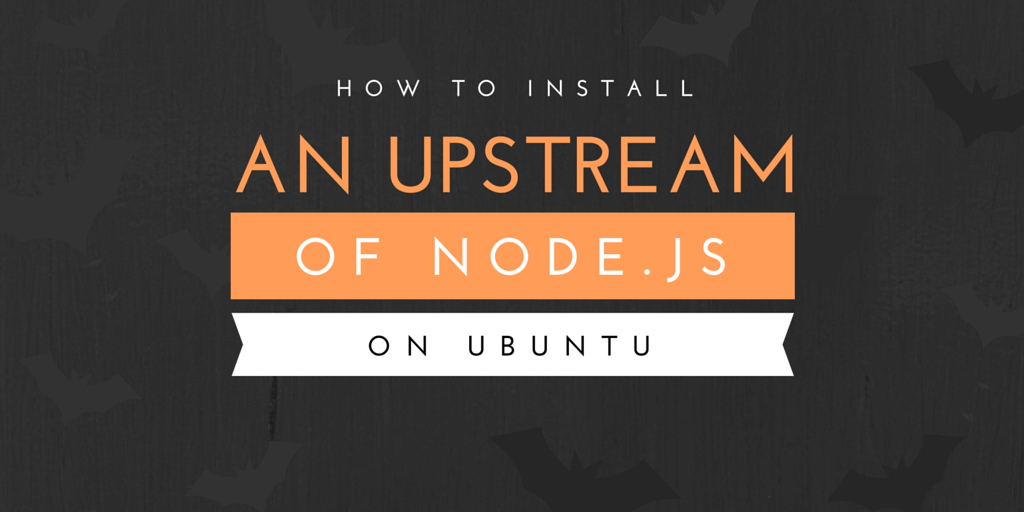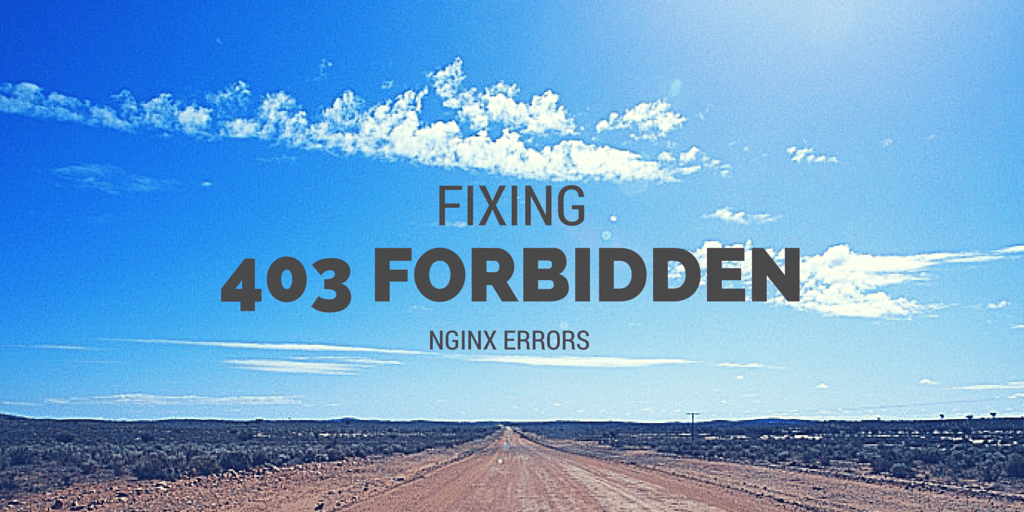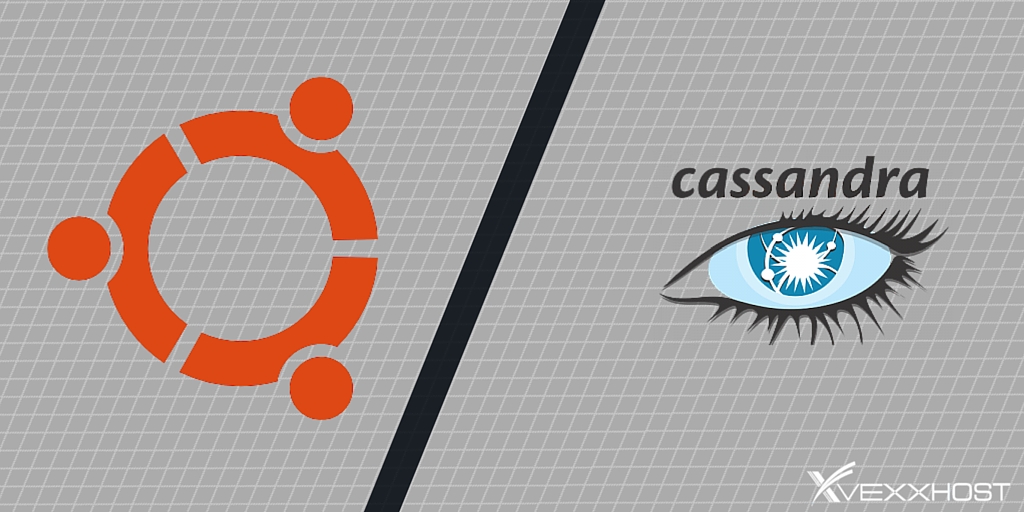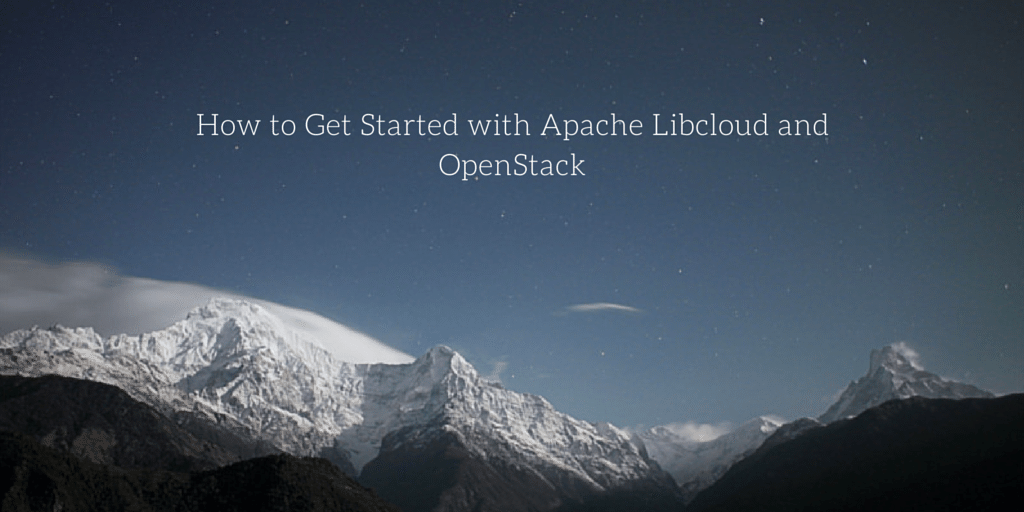TUTORIALS
Cloud Computing Strategy Tutorials & Documentation
How To Securely Set Up Shipyard 2.0.10 with TLS on CoreOS
Shipyard is a management tool for Docker servers. Docker is a cutting-edge piece of software used for containerization. Shipyard allows you to see which containers each of your servers are running, in order to start [...]
How to Use Prometheus to Monitor Your CentOS 7 Server
Prometheus is an open source monitoring system and time series database. It addresses many aspects of monitoring such as the generation and collection of metrics, graphing the resulting data on dashboards, and alerting on anomalies. [...]
How To Install and Use Docker Compose on Ubuntu 14.04
Docker is an open platform for distributed applications for developers and sysadmins. You can achieve agility and control for Development and IP Operations team to build, ship and run any application anywhere. It lets you [...]
How to Install Node.js On Ubuntu 20.04
Node.js, a JavaScript-based platform that uses Google Chrome's JavaScript V8 Engine, is very powerful. It is used to create I/O-intensive web applications such as video streaming sites, single-page applications, and many other web applications. Node.js [...]
10 Essential & Useful Ruby on Rails 4 Gems
The Ruby on Rails framework is an extremely powerful tool for developing web applications. It comes with plenty of built-in features that help accelerate the development of your web application such as intelligent routing and [...]
10 Essential Laravel 4 Packages Everyone Should Use
Laravel is a very popular and easy to use PHP framework which allows you to quickly build applications by providing a solid foundation of tools such as RESTful routing, built-in ORM, templating and much more. [...]
How To Allow Remote Access to MySQL
A distributed environment has become a requirement for many projects. Separate database servers can increase security and allow you to scale up resources quickly. Remote Access to MySQL is not required if your web application [...]
How to Setup Remote System Logging with rsyslog on Ubuntu 14.04 LTS
By default, there is an instance of rsyslog that runs inside every new Ubuntu installation. The rsyslog tool takes care of receiving all the log message from the kernel and operating system applications and distributing [...]
How To Install and Use EasyEngine (ee) on Ubuntu
EasyEngine (ee) is a linux shell-script collection, which makes managing your WordPress and Nginx sites on an Ubuntu server easy and fun. EasyEngine makes it very easy to manage Nginx and we will no longer [...]
How To Install FreePBX on CentOS
PBX (stands for private branch exchange) is a private telephone network used that can be very easily connected to the public landline and mobile networks. The PBX network also provides audio, video and instant messaging [...]
How To Install an Upstream Version of Node.js on Ubuntu
Node.js is a software platform that is used to build fast and easily scalable applications. Node.js utilizes JavaScript as its scripting language and achieves high throughput via non-blocking I/O and a single-threaded event loop. Node.js [...]
Nginx Windows: How to Install
Nginx is an extremely high performance web server which has the ability to handle thousands of requests per second with little hardware requirements. It can be installed on any operating system and it comes as [...]
How to add extra swap space on CentOS 6
In CentOS 6 swap space or simply swap is something that is used by the operating system when the system requires more memory that the physical memory installed on the server. In that case, the [...]
How To Set Up a Minecraft Server on Linux
Minecraft is popular sandbox indie game originally created by Swedish programmer Markus “Notch” Persson and later developed and published by Mojang. It is a game about breaking and placing blocks. At first, people built structures to [...]
How To: Install Apache Server On Ubuntu 16.04
Introduction The Apache HTTP server is one of the most used web server today. The great features that Apache HTTP includes media assistance, loadable modules and extensive integration with other popular applications. In this [...]
CentOS 6 to CentOS 7 Upgrade Procedure
CentOS 7 was released only few weeks after Red Hat Enterprise Linux 7, including the same exciting features RHEL ships. Besides the long awaited Systemd and the right now much discussed Docker this release also [...]
How to Convert React Class Components into Functional Components using React Hooks
React's 2019 announcement of hooks was a way to abstract logic into reusable parts. Hooks were created by React to address common problems. They are primarily an alternative to classes. Hooks allow you to create [...]
Getting Started with MEAN Stack
Node.js has one of the biggest tech communities behind it and as a result it also has a colossal amount of toolset to choose from for whatever project you are working on. Small tools are [...]
How To Install & Host Ghost with Nginx on Ubuntu
Ghost is an Open Source application which allows us to write and publish our own blog, giving you the tools to make it easy and even fun to do. It’s simple, elegant, and designed so [...]
How To Work with Docker Data Volumes on Ubuntu 14.04
A Docker volume permits data to be stored in a container outside of the boot volume but within the root file system. In our previous posts we have launched containers from various images and even [...]
MEAN & Socket.IO Integration Tutorial
One of hottest topic in node.js is building realtime web applications. If you come from a C/C++/Java background, you will be amazed how surprisingly easy it is to quickly build out a realtime communication between [...]
How to protect your SSH server with Fail2Ban on Ubuntu
Every server that exists online, virtual or dedicated, has some purpose related to its existence. It could be used as mail server, file server, web server or anything else. That means, no matter how hard we [...]
Installing the Latest MySQL on Ubuntu 16.04
Introduction Having the latest version of MySQL is very important. Fortunately, keeping MySQL up-to-date is not a hard task. In this tutorial, we will walk through the steps of installing the latest version of MySQL [...]
How To setup LAMP stack on CentOS 7
LAMP is short for Linux, Apache, MySQL or PHP which is an open source web development platform. It uses Linux as it’s operating system while Apache and MySQL are used as a web & database [...]
How To Install & Setup Puppet Master and Client on Ubuntu 14.04
Puppet is a system that is used for automating system administration tasks. Almost all system administrators try to get rid of their daily repetitive and boring routine tasks with the help of scripting to automate [...]
How to Install and Use Docker on Ubuntu 14.04
Docker is an open-source program that enables a Linux application and its dependencies to be packaged as a container such as configuration files, however, unlike a virtual machine, a container doesn’t run a OS, it [...]
How To Deploy a Clojure Web Application on Ubuntu 14.04
Clojure is a modern, functional programming for the JVM and a dialect of the Lisp (LISt Processing) that focuses on concurrent programming found in operating systems. Clojure is a functional programming language that features a [...]
How To Install Elasticsearch 1.7, Logstash 1.5, & Kibana 4.1 (ELK Stack) on Ubuntu 14.04
The ELK stack consists of Elasticsearch, Logstash, and Kibana that many companies are using to centralize their valuable data. These are the three different open source products that are most commonly used in log analysis [...]
How To Create a SSL Certificate on Nginx for Ubuntu
Security is always very important when it comes to any type internet communication. SSL certificates are one way to get higher level of security for web servers. When a web server runs using secure protocols, [...]
How To Install & Use Hugo, the Static Site Generator, on Ubuntu 14.04
Hugo is a general-purpose website framework used for generating static websites. It's written in Go, which makes it the only real popular generator written in a statically compiled language. Sites built with Hugo are very [...]
How To Setup Your Own VPN With PPTP on Linux (CentOS, Ubuntu, Debian)
A virtual private network (VPN) is network that extends a private network (i.e. LAN) across a public network, such as the Internet. It enables a communications between computers and devices across shared or public networks [...]
How to install IonCube Loaders on Ubuntu 14.04
IonCube lets you protect your website's PHP code from being viewed and ran on unlicensed computers. IonCube Loaders is an encryption/decryption utility for PHP applications which also assists in speeding up the pages that are [...]
Fixing 403 Forbidden Nginx Errors
HTTP errors are pesky and typically hard to resolve without the right tools. However, with proper investigation and tools, you can easily identify the source of a problem and fix it just as fast. In [...]
WordPress Performance Tip: Controlling Cronjobs
So, your blog is growing fast or you are worried that your visitors will start increasing quickly but your WordPress based website or blog is slowly starting to slow down. You are panicking and you [...]
How To Install Rails & Nginx with Passenger on Ubuntu
Ruby on Rails is an open source web application framework which runs on the Ruby programming language. It allows the developers creating pages and applications that gather information from the web server, talk to or [...]
How to Upload Custom Images with OpenStack
The robustness of the OpenStack cloud allows you to run almost any operating system that you need on our platform. The only thing you need to do is make sure that it’s configured to pick [...]
Getting started with Docker in minutes using Docker Machine
Docker is an open source platform designed for system administrators and developers to deploy applications. There are a number of tools around the Docker ecosystem which make it easier to get started with Docker, one [...]
How To Setup Highly Available Web Servers with Keepalived & Floating IPs on Ubuntu 16.04
High availability refers to a system or component that is continuously operational for a desirably long length of time. Availability can be measured relative to "100% operational" or "never failing." A widely-held but difficult-to-achieve standard [...]
How To Setup SSH Keys
SSH keys are by far the most secure way of logging into your cloud server via SSH. Passwords can be eventually cracked using brute-force attacks if they are too easy. If they are complex passwords, [...]
How to install & configure WordPress 4.2.2 on CentOS 7
WordPress is an open source tool and a content management system written in PHP. It’s one of the easiest and powerful website creation tool for blogging. It’s completely customizable and it can be used for [...]
How To Deploy Python Web Applications with Bottle Micro Framework on Ubuntu 16.04
Python is a programming language that is freely available and that makes solving a computer problem almost as easy as writing out one's thoughts about the solution. It can be written once and run on [...]
Small Dive Into Meteor.JS
If you follow the latest JavaScript hypes, I am sure you have already heard about the awesomeness of meteor.js. If you have not yet, this is your chance. This article will walk you through the [...]
How To Run Nginx in a Docker Container on Ubuntu 16.04
Nginx is an open source reverse proxy server for HTTP, HTTPS, SMTP, POP3, and IMAP protocols, as well as a load balancer, HTTP cache, and a web server (origin server). Docker containers enable developers to [...]
How To Reset Your MySQL or MariaDB Root Password
MySQL is an open-source relational database management system (RDBMS). It is open-source and free software, under GNU General Public License as well as available under various proprietary licenses. MySQL is an integral part of many popular software [...]
How To Install & Configure Varnish with Apache on Ubuntu
Varnish is an HTTP accelerator designed for content-heavy dynamic web sites. In contrast to other web accelerators, such as Squid, which began life as a client-side cache, or Apache and nginx, which are primarily origin [...]
How To Install Linux, Nginx, MySQL, PHP (LEMP) stack on Ubuntu
The acronym LEMP refers to first letters of the four components of a solution stack, composed entirely of free and open-source software, suitable for building high-availability heavy-duty dynamic web sites, and capable of serving tens [...]
How To Mitigate & Fix OpenSSL Heartbeat on CentOS or Ubuntu
An extremely critical security issue was recently discovered in OpenSSL. It has been found affecting versions 1.0.1 through 1.0.1f. All CentOS 6.5 versions are packaged with OpenSSL 1.0.1e-15 are all vulnerable to this bug. Note [...]
How to install, configure & use Jenkins on Ubuntu 14.04
Jenkins is an open source application that monitors execution of repetitive jobs, such as building a software project or jobs ran by cron. It’s written in Java programming language and designed to test and report [...]
How to Install Git on Ubuntu
Git is an open source, distributed version control system. It’s all the rage right now with sites like GitHub offering a social coding experience, and popular projects such as Perl, Ruby on Rails, and the [...]
How To Install and Setup Postfix on Ubuntu
Postfix is one of the most popular Mail Transfer agent nowadays. It comes as free and open source software package. Recent studies have showed that at least 25% of the mail servers on internet are [...]
How To Setup VNC For Ubuntu
In computing, Virtual Network Computing (VNC) is a graphical desktop sharing system which transmits the keyboard and mouse events from one computer to another, relaying the graphical screen updates back in the other direction, over [...]
How To Configure a Galera Cluster with MariaDB on Ubuntu 12.04
Every online system use database to store its information. Keeping the data safe and secure is top priority for such system. There are a lot of possible solutions to achieve that nowadays. One of the [...]
Installing Latest Node.js on Ubuntu
Node.js is a software platform that is typically used to build large scale (most frequently server-side) applications. It uses Javascript as its scripting language and it can deliver high performance because of it’s non-blocking I/O [...]
How to setup HHVM server on Ubuntu 14.04
HipHop Virtual Machine was developed and open sourced by Facebook. It’s an open source virtual machine designed for executing programs written in Hack and PHP but it’s not a replacement for PHP. HHVM uses a [...]
How To Secure Apache with Let’s Encrypt on Ubuntu 20.04
HTTPS is a great way to protect the Apache webserver. HTTPS protects your communication between your browsers and servers from being intercepted or tampered with. Modern browsers will warn you if you use the plain [...]
How To Set Up Nginx Virtual Hosts on Ubuntu
If we have a single server that is used as web server and it has allocated one IP address only, then in order to have more than one website or domain running on the server, [...]
Ruby on Rails vs. Laravel: Getting Started
There are currently many popular frameworks for online web application development. There are also different types of frameworks, such as those with plenty of additions and extras, which allow for faster iteration (such as Rails) [...]
How To Deploy a Hugo Site to Production with Git Hooks on Ubuntu 14.04
Hugo is an open source static site generator. Static site generators build a web page the moment you’re creating or editing new content. It comes with a watch mode that automatically refreshes web pages when [...]
How To Install Linux, Apache, MySQL, PHP (LAMP) stack on Ubuntu
The acronym LAMP refers to first letters of the four components of a solution stack, composed entirely of free and open-source software, suitable for building high-availability heavy-duty dynamic web sites, and capable of serving tens [...]
How to Setup OpenStack CLI Tools
In this tutorial, we’re going to look into installing all the CLI toolsets required to interact with an OpenStack cloud (taking our cloud as an example). At the time of writing this article, there are [...]
How to install Elasticsearch on Ubuntu 14.04
Elasticsearch is a highly scalable open source search engine built on top of Apache Lucene and released under an Apache license. It is a tool for querying written words with some other nifty tasks but [...]
How to: Setup Cassandra & Run a Single-Node Cluster on Ubuntu 16.04
Apache Cassandra is an open source distributed database management system designed to handle large amounts of data across many commodity servers, providing high availability with no single point of failure. Cassandra offers capabilities that relational [...]
How To Get Started with Apache libcloud & OpenStack
Libcloud is a Python library that provides an abstract API to interact with many popular cloud service providers. It allows you to write code once in a unified API and have it work with all [...]
How to Add Swap on Ubuntu
Swap space in Linux is used when the amount of physical memory (RAM) is full. If the system needs more memory resources and the RAM is full, inactive pages in memory are moved to the [...]
How to setup OpenVPN Server and Client on Ubuntu 14.04
OpenVPN is one of the most popular and widely used open source software application that implements virtual private network (VPN) technologies for creating secure point-to-point or site-to-site connections in routed or bridged configurations and remote [...]
How To Install Ruby on Rails on Ubuntu
Ruby on Rails, often simply Rails, is an open source web application framework which runs on the Ruby programming language. It is a full-stack framework: it allows creating pages and applications that gather information from [...]
How to deploy a MariaDB Galera cluster on Ubuntu 14.04
Today we will show you about the deployment of MariaDB Galera Cluster on Ubuntu 14.04. MariaDB is an enhanced, drop-in replacement for MySQL while MariaDB Galera Cluster is a synchronous multi-master cluster for MariaDB. MariaDB [...]
How to install WordPress with Ubuntu 20.04 and a LAMP Stack
WordPress - millions use this powerful, open-source, customizable, pluggable CMS worldwide to create blogs and fully functional websites. It is easy to use and understand, even for those with no previous website design or development [...]
How to install and use Logwatch on Ubuntu 14.04
When you know about the normal state of your network and servers, then you can easily spot the abnormal by just monitoring its logon activity. So, In this tutorial we will guide you on the complete [...]
Setup Continuous Integration Pipelines with GitLab CI on Ubuntu 16.04
Introduction A self-hosted Git repository provider, GitLab Community Edition comes with additional features for software development as well as project management; including GitLab CI, which is a built-in continuous integration and delivery tool. This tutorial [...]
How To Customize your Ghost Instance
Ghost is an Open Source application created and dedicated to blogging. It allows us to write and publish our own blog, giving you the tools to make it easy and even fun to do. It [...]
How To Host Multiple Ghost Instances On A Single Server
Ghost is a great and simple to use blogging platform, with a clean and easy to use interface, having just the options that every user need in order to create and maintain their blog. In [...]
How To Create a High Availability HAProxy Setup with Corosync, Pacemaker & Floating IPs on Ubuntu 14.04
A high availability architecture is one of the key requirements for any Enterprise Deployment network. In this tutorial we will cover the build of a two-node high-availability cluster using the Corosync cluster engine, and the [...]
How To Deploy Django on Nginx, Gunicorn with Postgres
Django is a free and open source web application framework, written in Python, which follows the model–view–controller architectural pattern. It is maintained by the Django Software Foundation (DSF) and its primary goal is to ease [...]
How to configure HTTP authentication with Nginx on Ubuntu 14.04
HTTP supports the use of several authentication mechanisms to control access to pages and other resources. These mechanisms are all based around the use of the 401 status code and the WWW-Authenticate response header. HTTP authentication is the simplest [...]
WordPress App on Ubuntu 14.04 LTS
We have built a ready-to-go application image which offers you the latest WordPress release running on an optimized Apache, PHP and MySQL stack. You don’t need any knowledge in managing your server, all you need [...]
How To Install GitLab As Your Private GitHub Clone
Git is a distributed revision control and source code management (SCM) system with an emphasis on speed. Every Git working directory is a full-fledged repository with complete history and full version tracking capabilities, not dependent [...]
How To Install WordPress & PhpMyAdmin with Docker Compose on Ubuntu 14.04
Compose is a tool for defining and running complex applications with Docker. With Compose, you define a multi-container application in a single file, then spin your application up in a single command which does everything [...]
How to use cron jobs for automation on Ubuntu 14.04
Cron is one of the most powerful tool in a Linux/Unix based operating systems. A cron job is a Linux utility used for scheduling a task to be executed in the specific time according to [...]
How to Deploy a Symphony Application to Production on Ubuntu 14.04
Symfony is a PHP full-stack web framework and an open source community-driven project built on top of the Symfony Components to create websites and web applications. It is written with speed and flexibility in mind [...]













































































